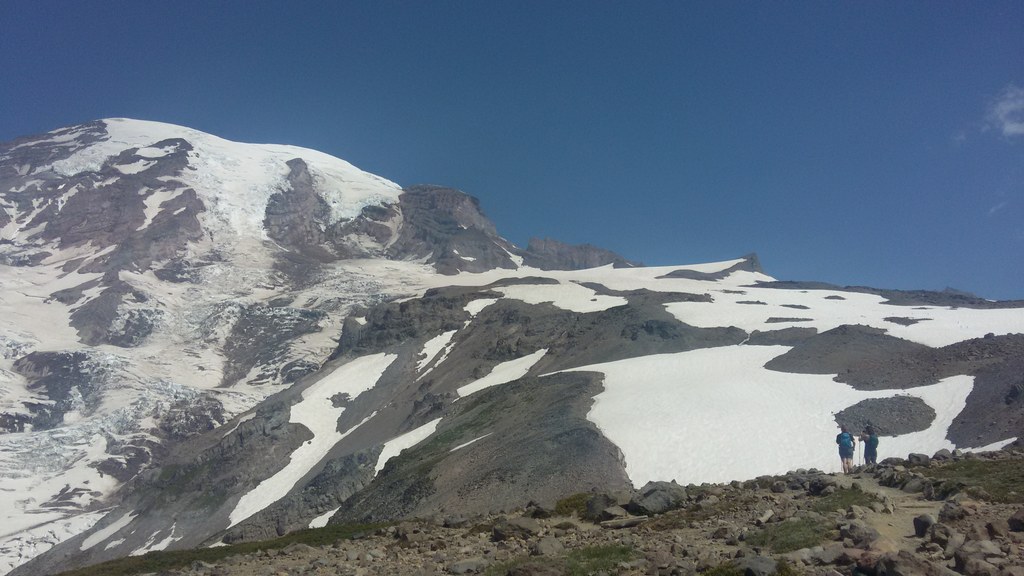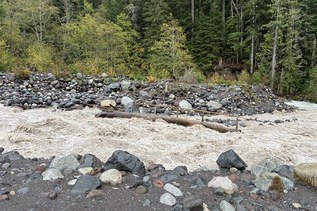The crosshatched system of trails heading out of Paradise is intricate, so make sure to stop by the visitor center to pick up a map if you didn't bring one in your pack. Once properly kitted out, depart from the Paradise parking lot and locate the trailhead behind the Jackson Visitor Center.
Proceed north, following signage for the Skyline Trail. Junctions for several ancillary trails (including the Waterfall Trail and the Deadhorse Creek Trail) exist along the paved Skyline Trail. While it's possible to access Glacier View via the Deadhorse Creek Trail, and the west leg of the Waterfall Trail is a nice detour in wildflower season as it leads you through lupine-filled switchbacks, the mileage and elevation gain listed here are for the Skyline Trail. Your gain and length will vary if you use deviate, but the views are gorgeous whichever way you go.
The initial grade from the parking lot is quite steep, but it will eventually ease into a more forgiving climb after about 0.4 mile. As the intensity of the trail grade lessens, arrive at a split for the Dead-horse Creek Trail and Glacier Vista. For Glacier Vista, hang a left. You may be moving with the majority of hikers; most of them want to take advantage of the majestic backdrop for a photo or two.
As you approach the vista area, soak in the dazzling views of Mount Rainier and the Nisqually Glacier. The commanding 14,410-foot peak is also known as Tahoma or "great white mountain" to native tribes. Catch your breath— you're standing at 6,300 feet, a height reached in just 1.75 miles.
Once you've gotten your fill at Glacier Vista, continue up the trail. Note that although you may be tempted to explore off-trail, the best way you can help preserve the park’s delicate ecosystem is by staying on the rock-lined path.
Reunite with the Skyline Trail, and follow it as it loops in a hairpin curve and climbs to Panorama Point. After half a mile of climbing, reach a junction for Pebble Creek and Camp Muir. Here, summit-bound climbers head left, while you'll bear right (southeast) and arrive at Panorama Point after a short quarter mile of travel. Just a shade under an elevation of 7,000 feet, Panorama Point provides stunning views of the Paradise valley, Mount St. Helens, Mount Adams and even Mount Hood on a clear day.
Panorama Point also has a pit toilet to the northwest that is open in the summer and stands as the highest elevation toilet available to hikers outside of Camp Muir. If you do use these facilities, please make sure to latch the door from the outside when you leave, so wildlife does not mistakenly wander in and become trapped
Once you've goggled at the vistas around you, make your way back the way you came, taking care to yield to hikers coming uphill to enjoy the views you've just taken in.






 Trailhead
Trailhead


